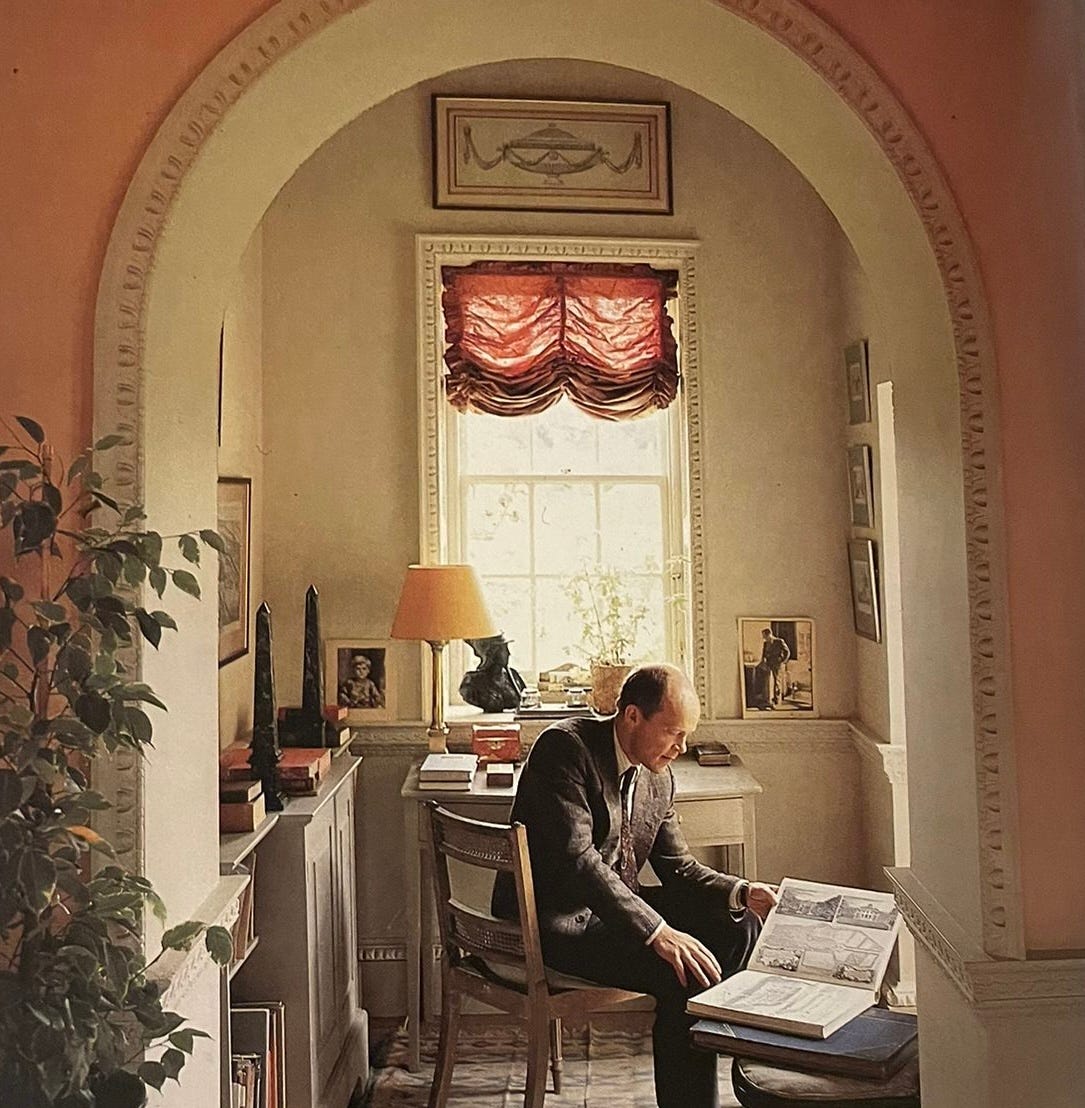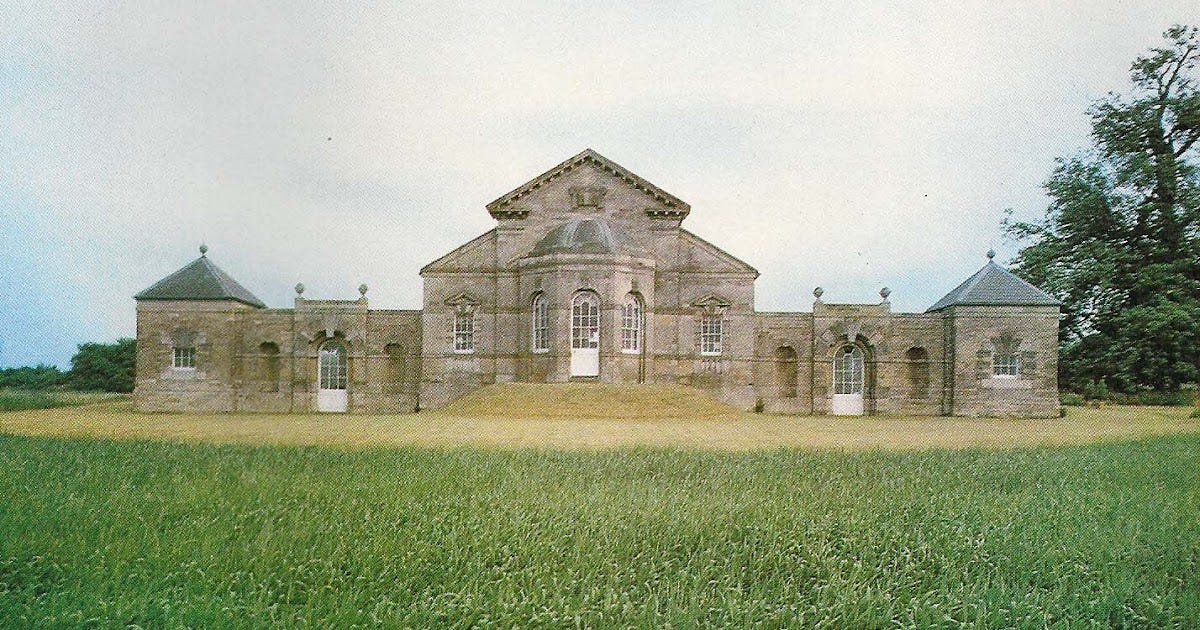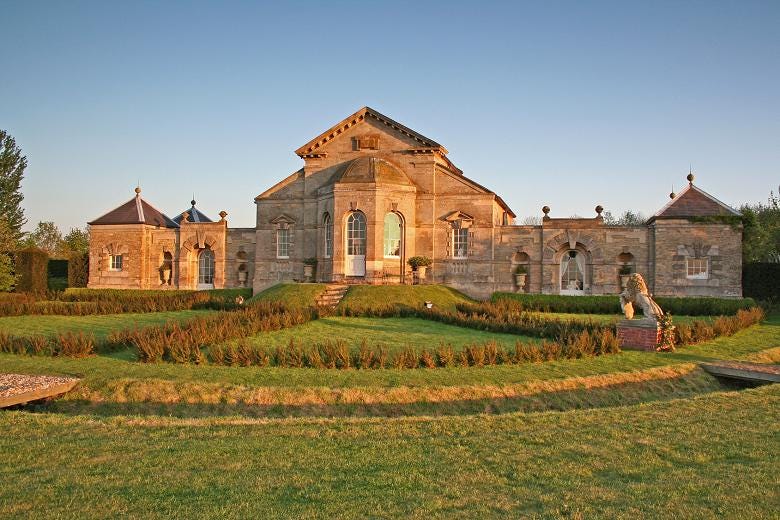HB Edit - Edition 26
Sharing the things on my ebay watch list that I don't have the space or money for, but wish I did.
Ebay treasure of every kind this week: from the reasonably priced to the inexplicably unreasonably priced. And I have had a happy time reading and researching about The Menagerie, a triumphant restoration story of one of England’s finest follies (shell grotto included).
I rarely see this style of Arts and Crafts chair with caned seats, but these are particularly smart. I love the ‘blonde’ birch patina, and the strong shape. If I had a breakfast nook, I’d use these with pretty seat pads, or even flanking a table in a hallway. Either way, architectural while being decorative. Big tick.
Ebay is such a treasure trove, I cannot deal! These are so pretty, and would be such a smart addition to any room - probably more ‘living’ than ‘bedroom’. I’d want to replace the candle stick covers (is that the technical term?) as I find the faux wax dripping version toe-curling. The listing says wired and ready to go: what are you waiting for?
TBC whether the wicker shelf is actually stable enough to stand anything on it… but I love these. Living in a flat with limited built-in storage, wall-hanging shelves have been essential in a few nooks (bathroom, utility room etc.) to store bits. A good price, and a nice shape.
I can’t put my finger on why, but I find this chair incredibly satisfying. The oak is very pretty, and the shape interesting. It’s giving piano stool (?) but in a chic way. It also reminds me of my nephew’s high chair… And yet, I think it’s fab. Another brilliant example of why eBay is so good. Where else would you begin to try and find this!?
This is very grown up. I really love the shape - ‘Georgian style’ rather than original - but it looks sturdy and comfortable. I’d love this as a side chair in a sitting room, which can so often become quite ‘stuffed’ with heavily upholstered sofas and armchairs. There’s something quite satisfying about its structure, the leggy-ness (another technical term) and height. I wouldn’t choose the fabric but it works?
I find fabrics that are “something while being nothing” really useful. Solid colours can feel blocky, and as Rita always used to say, your eye travels through the fabric when there’s space within the pattern. Not a huge piece, so maybe on a little slipper chair?
This is my bread and butter. A “proper” piece of furniture that is in almost mint condition, with beautiful legs and delicate proportions. The only problem: eye-wateringly expensive. And it’s not like it’s from an eBay ‘dealer’ - it’s clearly just in someone’s sitting room. But still, it’s free to dream. (If you’re loaded, buy this).
Breaking more HB Edit rules, with another international item. But these handles / pull bars are so cool. I love the Art Deco style with reeded detail, and the soft shape. Three is a bit random, but you never know… It’s this kind of detail that stops a newly decorated house looking like it came out of a catalogue. Something different, something old, and something your in-law cannot order from deVol.
Feature: for each edition, I will feature a person, object, room or place that inspires me.
This week, I am writing about architectural historian Gervase Jackson Stops, enviably described in his obituary as the man who “knew every historic house in Britain, their contents and their story”. I mean… talk about heroes.
Gervase studied at Oxford, trained at the V&A, and worked at the National Trust for over 20 years, becoming the lead architectural advisor. He secured the first ever government grant to save a historic house (Canons Ashby, an Elizabethan manor house built from the stone of an Augustinian priory), setting a precedent that has saved hundreds of buildings across the country.
While there could easily be a longer account of Gervase’s life, my main focus for this feature is his Northamptonshire home: The Menagerie.
The single-story structure is attributed to Thomas Wright, designed as an “eye catcher” for the Earl of Halifax on the Horton Hall estate (Northamptonshire) in the 1750’s. It was considered a “masterpiece” by all accounts, with plasterwork by Thomas Roberts of Oxford. With the main house demolished in the 1930s, The Menagerie (originally a banqueting hall) became one of a few remaining structures, falling into disrepair, until Gervase purchased it in 1972.
To me, The Menagerie is end-game.
It has all the benefits of grandeur (the proportions, the plasterwork), with none of the downsides (sprawling leaky roof, an impractical number of rooms, hundreds of windows). It is essentially one big room, flanked by smaller ‘pavilions’ housing two bedrooms and bathrooms on one side, and a kitchen and dining room on the other. Oh, and there’s a shell grotto in the basement, built by Gervase and his boyfriend, Ian Kirby (j’adore).
Christopher Hobbs - sculptor and set designer - worked tirelessly to restore the plasterwork, hand-crafting festoons of musical instruments, medallions with all 12 zodiacs and the Father of Time himself. Whilst working from original plaster examples, Gervase included his own wink to future onlookers, featuring the score of Shirley Temple’s “Animal Crackers in my Soup” on an open music book. Talk about camp!
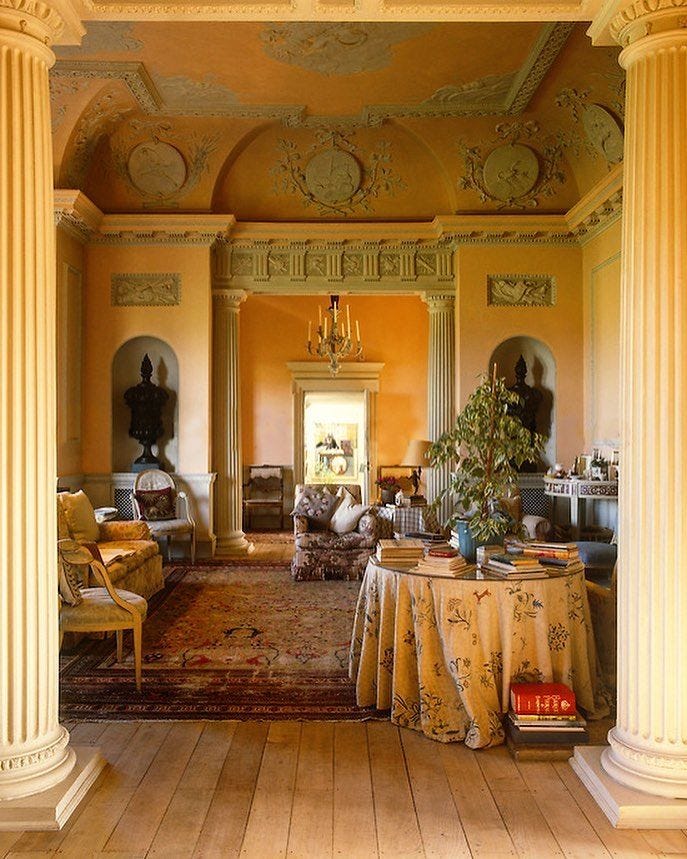
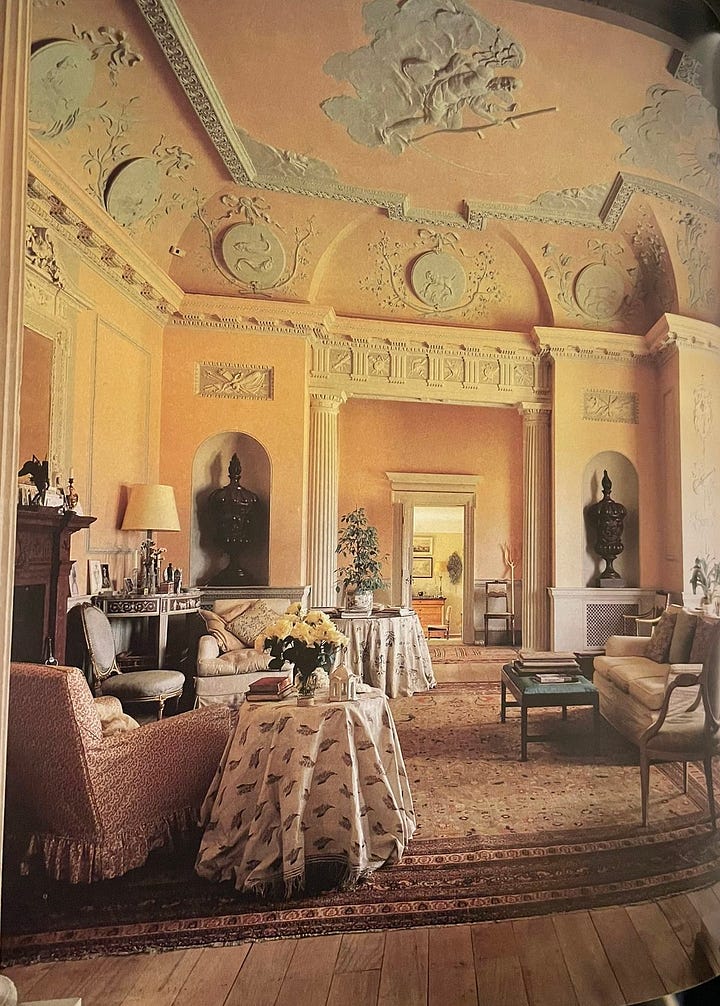
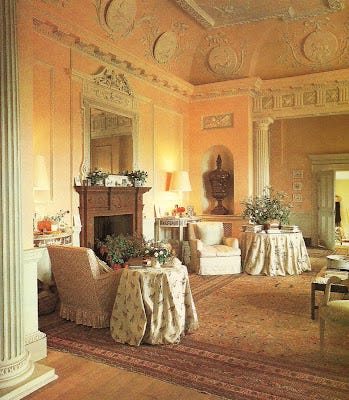
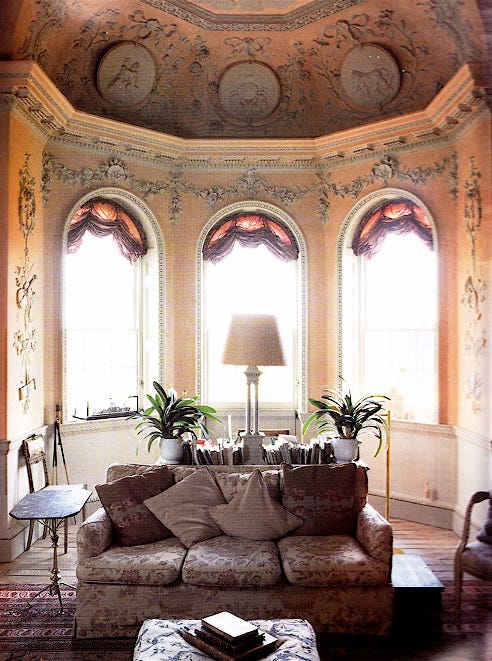
While the story of a triumphant restoration is enough to get me going, I can’t help but be inspired by the image of Gervase and Kirby living their day-to-day life in this magical world. The furnishings are unpretentious, with loose-covered armchairs and skirted-tables. Gervase’s study nook, in the corner of the great room, is the perfect temple to classicism. The rug is a masterpiece, and the scheme of pale pink and grey feels timeless (however overdone and butchered it has been today). It looks like somewhere you could live fully, abundantly, generously. The perfect backdrop to spend winter weekends in front of the fire, or long summer evenings overlooking the parkland.


Gervase died in 1995 of AIDS related illnesses. While some accounts of Gervase’s life obscure his sexuality - indeed, the same obituary that lauds his passion for architectural heritage conveniently overlooks his queerness, referring to his romantic partner as simply ‘a friend’ - he is a true gay icon.
The house was sold in 2011 for circa £1.6million, and I am desperately hoping for two things: that it comes up again in the future, and it’s at a time when I’ve made my fortune.
More anon!
References:
The Englishman’s Room, by Alvide Lees Milne and Derry Moore
Instagram: @hugobeazley
Postal address: 97 Regency Street, London, SW1P 4AL












